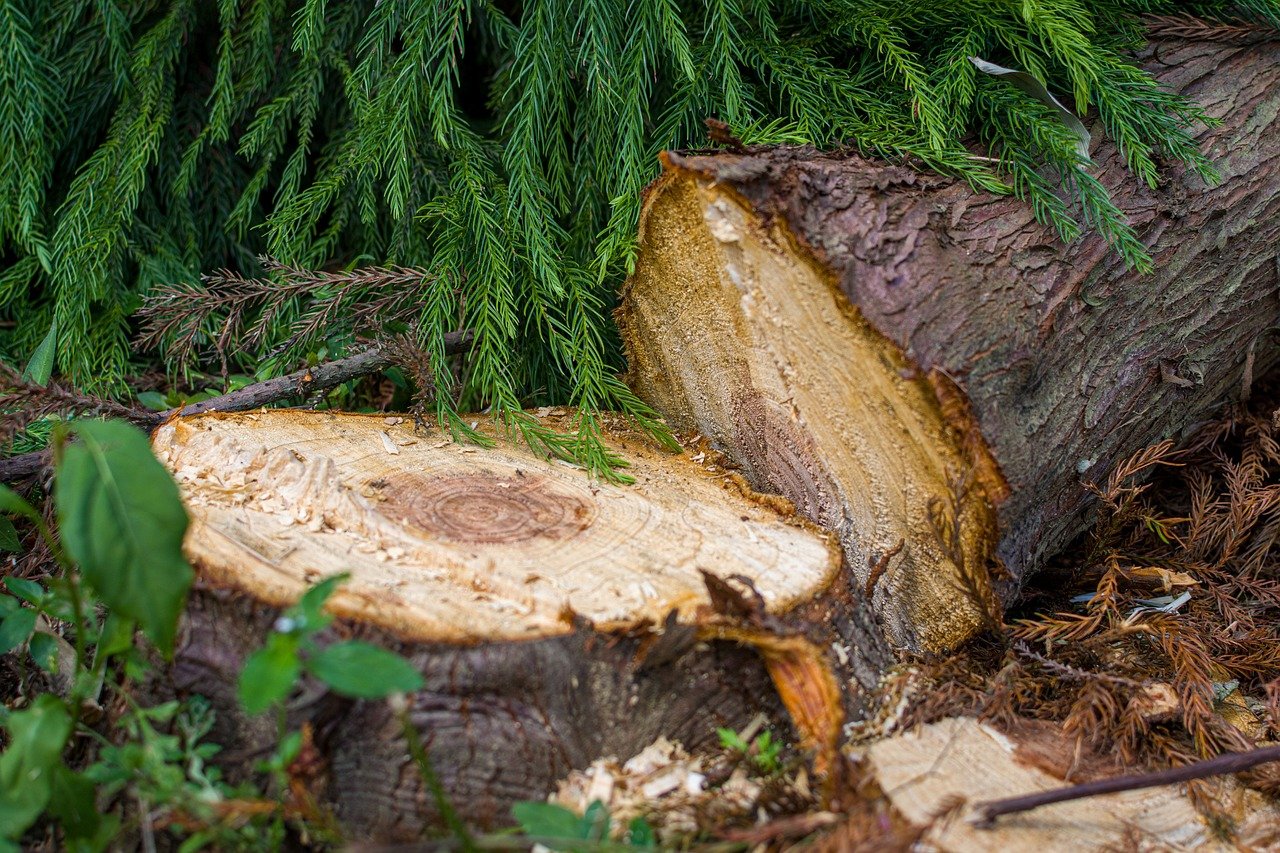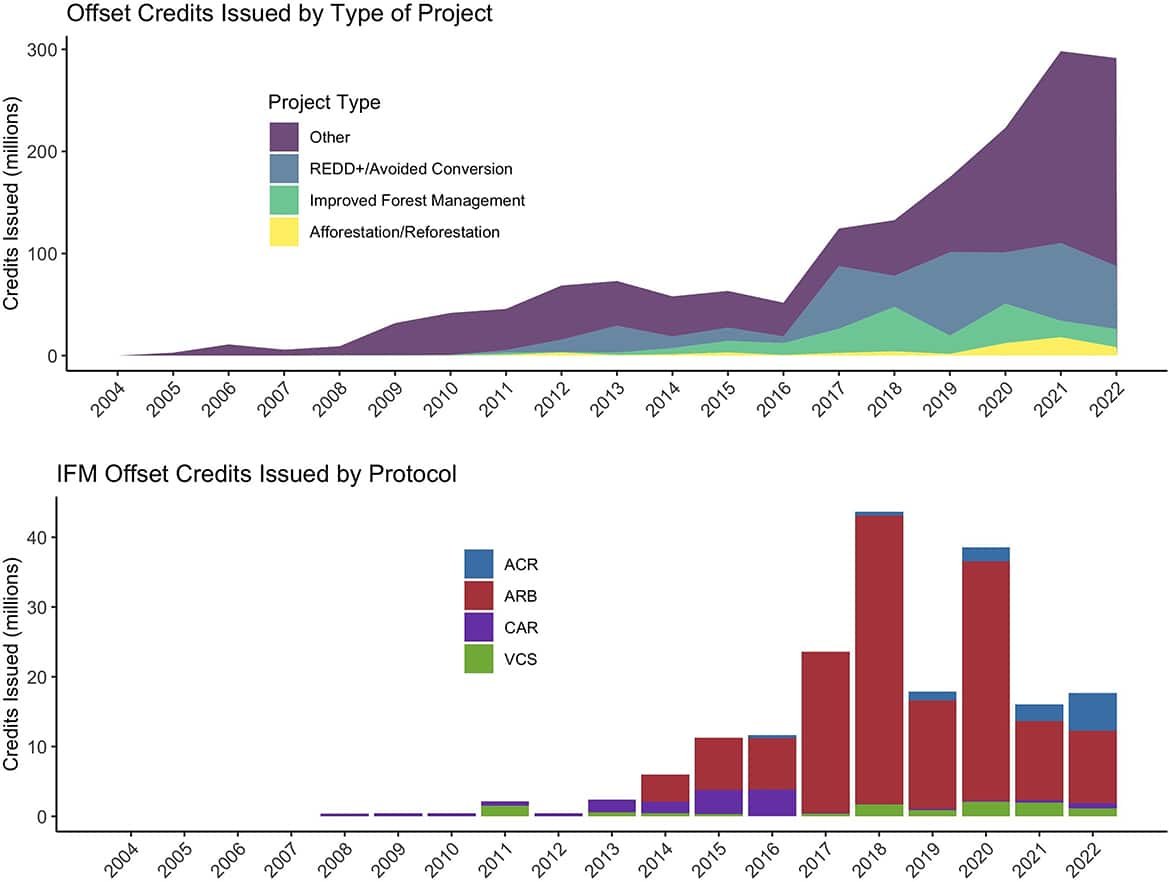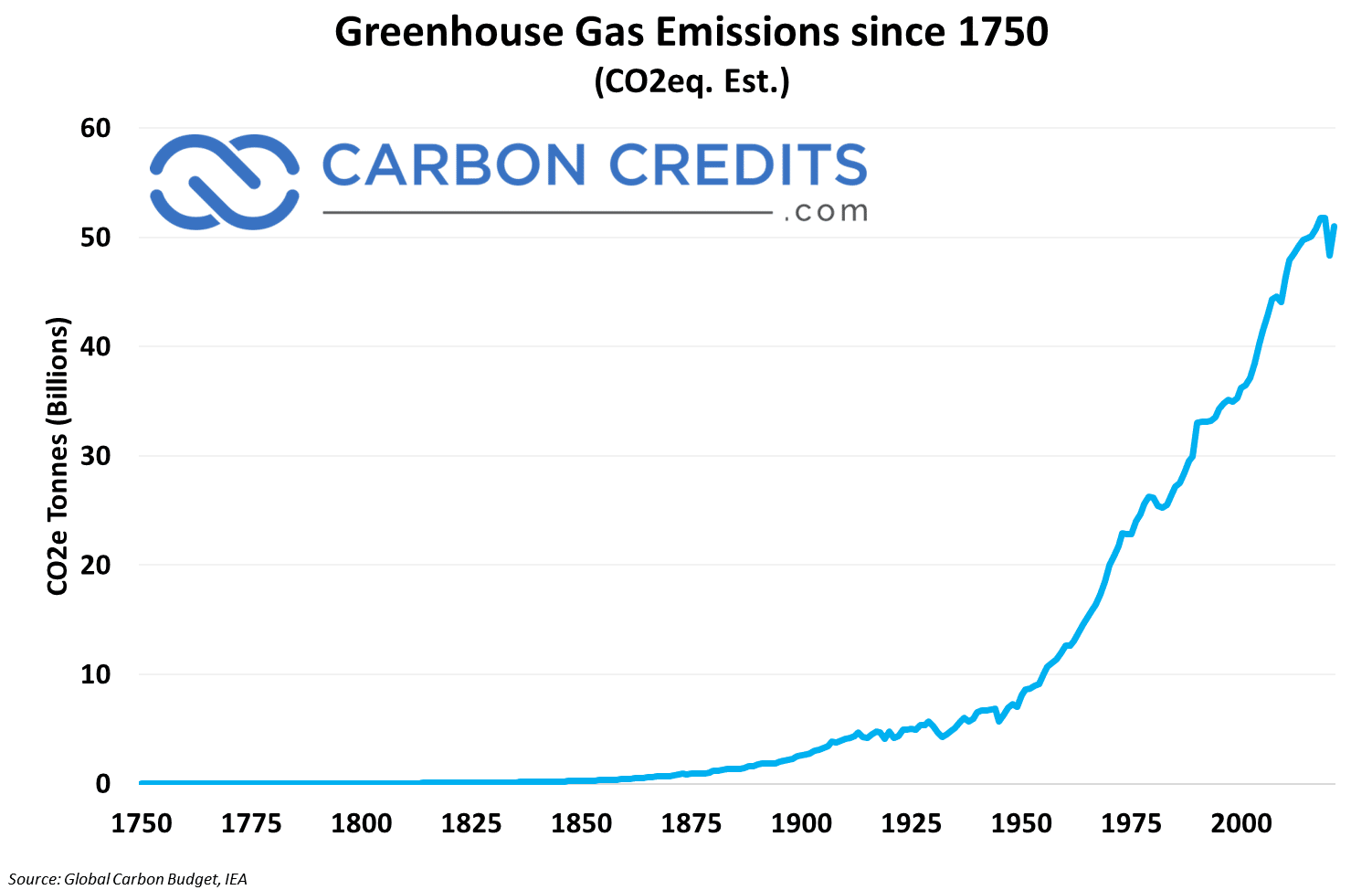As the world continues to grapple with climate change, forest carbon offsets have emerged as a promising solution. By preserving and protecting forests, we can capture and sequester carbon from the atmosphere, reducing greenhouse gas emissions. Not only does this benefit the environment, but it also creates economic opportunities for communities that rely on the forest for their livelihoods.
Introduction to Forest Carbon Offsets
For years, companies have been given an option to deal with their environmental impact: cancel out their carbon pollution by paying for efforts that protect the forests. That’s essentially the idea behind forest carbon offsets.
If you’re a landowner who wants to earn extra from keeping your trees standing, forest offsets suit you well. Or perhaps you’re a company owner willing to support forest protection initiatives, forest carbon offsets are perfect for you.
Either way, let’s help you understand everything you need to know about this kind of carbon offset credit. From providing a detailed explanation of it to identifying its benefits and how to purchase it for your offsetting needs.
What are Forest Carbon Offsets?
Forest carbon offsets involve a process where a forest, at risk of being chopped down or for other purposes, is protected in exchange for payment. This payment goes to the forest owner, which could be a government or private landowner, to prevent deforestation.
Once the owner and buyer close the deal, the forest area becomes a “carbon credit project.” Their agreement involves a commitment not to cut down the trees or be destroyed by fire. The organization or person managing this project sells these commitments and takes a portion of the money earned.
On the other side, a company that pollutes can buy these credits to neutralize their emissions by a certain amount.
Trees are excellent at storing carbon in their structure, so when a tree grows larger, it can hold more carbon. This carbon storage also happens in soils and other vegetation.
However, when a tree is cut down, the carbon it stores is released into the air. If the tree is used for timber, some carbon remains stored, but a significant portion is released into the atmosphere.


A forest carbon offset, therefore, represents a metric ton of carbon dioxide equivalent (CO2e) of avoided or sequestered carbon. Emitters buy the offsets to compensate for their carbon emissions happening elsewhere.
What are the Types of Forest Carbon Offsets?
Currently, three forest project types qualify to generate carbon offsets: afforestation or reforestation, avoided conversion, and improved forest management (IFM).
Each forest project type comes with its unique costs, benefits, and ways of accounting for carbon. Determining which one suits your property best is the initial stage in the exploration process. So, let’s differentiate each type to guide your climate mitigation decision.
Afforestation/Reforestation
Afforestation, a vital environmental effort, revolves around reinstating tree cover on lands that were previously devoid of forests. These projects are fundamental in addressing deforestation, enhancing biodiversity, mitigating climate change, and contributing to ecosystem restoration.
However, embarking on afforestation initiatives often incurs substantial costs due to the comprehensive processes involved, including land preparation, tree planting, maintenance, innovation and technology, and long-term investment.
Avoided Conversion
Avoided Conversion projects are crucial initiatives aimed at preventing the transformation of forested areas into non-forested landscapes. These projects, also called REDD+ (Reducing Emissions from Deforestation and Degradation), help fight climate change by safeguarding existing forest cover.
But for this project to be considered eligible for carbon offset programs, project developers must substantiate that the land faces a substantial and imminent threat of conversion.
Improved Forest Management (IFM)
IFM initiatives focus on optimizing the management practices of forested areas to enhance carbon sequestration, biodiversity, and overall ecosystem health. They aim to increase or maintain the carbon stored within forests, contributing to climate change mitigation efforts while ensuring sustainable use of forest resources.
- Among these three forest types, IFM projects are the most frequently traded compliance offsets in California’s cap and trade program.
According to a research by Haya et al. (2023), IFM projects provided 193 million carbon offset credits since 2008. This accounts for 28% of the total credits from forest projects and 11% of all credits generated in voluntary carbon markets.


Developers of IFM projects must demonstrate that their forests are capturing more carbon than what would happen in a ‘business-as-usual’ situation across these carbon credit types.
Benefits of Forest Carbon Offsets
Well-designed and effectively executed forest carbon offsets can serve as incentives to reduce deforestation and forest degradation. They also aid in enhancing forest governance while promoting support for the rights of Indigenous peoples and local communities.
Supporting forestry projects through carbon offsets offers the following benefits:
- Preserving intact forests and those that are mostly untouched to safeguard biodiversity and the services provided by ecosystems. Indigenous peoples’ territories are crucial in this regard, as they have a proven track record of effectively conserving forests.
- Improving the management of production forests and plantations to supply essential materials, enabling a shift from a fossil-fuel-based to a bio-based economy. This involves developing alternatives for materials like cement and steel, which have a high carbon impact.
- Boosting tree presence in agricultural lands by implementing diverse agroforestry systems and offering stronger financial and social incentives to communities.
- Reviving degraded land across the planet to enhance ecosystem-based services. Similar to other nature-based solutions, this restoration should always be done collaboratively with local communities in ways that suit the local context.
Each of these aspects could be integrated into a program providing forestry carbon offsets. They represent a more effective approach to land stewardship, resulting not only in carbon storage but also in numerous advantages.
Forest Carbon Offsets in Climate Change Mitigation Strategies
Managing forests to capture carbon presents an opportunity to reverse the impacts of man-made climate change. Global greenhouse gas (GHG) levels have swiftly risen, with almost half of these emissions happening in the last 40 years.


Forecasts from climate models foresee rising global temperatures, higher sea levels, and shifts in weather patterns. These shifts result in severe droughts, floods, and the intrusion of rising sea levels into freshwater reserves, threatening drinking water sources.
Research indicates that communities dependent on agriculture or in coastal regions will likely face significant challenges due to global warming.
Studies suggest that capturing carbon in forests can play a substantial role in lessening the effects of climate change. Currently, according to the US Forest Service, forests in the US absorb around 16% of the nation’s emissions generated from burning fossil fuels.
Furthermore, forests deliver diverse ecosystem services to the public, like managing water quality and quantity while providing habitats fostering biodiversity.
Market for Forest Carbon Offsets
In 2022, about 30% of all carbon offset credits for forestry projects came from voluntary registries. These projects, like IFM, REDD+, and afforestation, include various types.
The research by Haya et al. also pointed out that the U.S. was the main contributor to forest offset credits from IFM projects, accounting for 94% of them. Most of these credits were registered under the CARB (California Air Resources Board) compliance carbon offset program, with almost half originating from U.S. forest projects.
So far, most forest offset credits from all registries have been given to projects that reduce tree harvesting significantly, aiming to prevent carbon losses in forests compared to standard scenarios.
To date, sellers of forest carbon are big forestland owners seeking to diversify their forest-based revenue streams.
Pricing of Forest Carbon Offsets
Prices for carbon offset credits in voluntary markets have dropped in the past year. Forest carbon offsets belong to nature-based solutions represented by the Nature-Based Global Emissions Offsets (NGEOs).
While the prices of all VCM offsets have been hit, the decline in NGEO prices stands out because of the premium they were trading at over the other offsets last year.


Several reasons caused this decline. Global economic challenges, such as high inflation, ongoing conflicts like the war in Ukraine, and lasting pandemic effects slowed economic growth in 2022 and continued into 2023.
Moreover, there hasn’t been progress on a unified standard for carbon credit markets globally at COP27. This lack of advancement is holding back growth in voluntary markets.
Nonetheless, emitters are actively seeking ways to offset their residual emissions, particularly in hard-to-abate sectors. If you’re one of them, the following section will help guide you on how to buy forest carbon credits for your offsetting needs.
Process of Purchasing Forest Carbon Offsets
Buying forest carbon offsets is pretty much similar to purchasing other types of carbon credits. You can opt for directly getting them from project developers, which means from a forestland owner. You can also buy the offsets from other providers.
For instance, you can look for a broker. Brokers can make it easier and quicker for you to get the offsets you need, especially if you need a lot of them.
A broker also handles all the transactions on your behalf, and this purchasing process doesn’t require long-term contracts. But it would cost you a bit more.
Another provider would be the retailers, who can give you at least basic information about the offsets they’re selling. Usually, they hold an account on a carbon registry and retire the offsets on your behalf.
Alternatively, you can also buy forest carbon offsets from an exchange. There are several carbon exchanges or trading platforms that provide these offsets. They often collaborate with registries to enable trading transactions.
Purchasing forest offsets from a trading platform would be easy and fast, and may cost less than brokers. However, you might find it more challenging to evaluate the quality of the offsets.
Calculating Your Carbon Footprint
But before you look for the right offset provider, it’s best that you know how many credits you need. And that means calculating your carbon footprint first and deciding how much of it you have to offset.
Remember that one forest carbon offset represents one tonne of carbon emission. So, if you or your company emitted a thousand tons of carbon dioxide or its equivalent in one year, you’ll need 1,000 offsets to neutralize all of them.
After calculating your total footprint, you can then determine the amount of offsets to purchase. Below is our comprehensive guide on how to calculate how many offset credits you need.
Purchasing and Using Offsets
Once you have purchased the offsets, using them does not just involve writing off your carbon footprint. It also includes some kind of responsibility and a couple of considerations.
For instance, you need to be confident that the offset credits are from projects that deliver real carbon emission reductions. That entails knowing the project details (e.g. type, location, environmental impacts, carbon reduction/removal, etc.).
You also have to ensure that the offsets are generated following credible and trusted carbon credit methodologies. This is crucial to make sure that you get the real value of each dollar you invest in the offsets.
More remarkably, forest carbon offsets are now under growing scrutiny as some projects are found to underdeliver the claimed reductions. This brings us to the last part of this guide.
Criticisms & Drawbacks of Forest Carbon Offsets
One major issue is additionality. It refers to whether or not the reductions would have happened even without the offset project. For example, a forestry project wouldn’t provide additional action on climate if it’s protecting a forest that was never in threat of being chopped down.
Another drawback of these offsets is permanence. It means the carbon reduction or removal should remain for 100 years to be permanent.
While some forest projects are capable of achieving that, others are at risks of reversal. This happens when different factors come into play that destroy the forests. Wildfires are the biggest culprit.

 Several forestry projects have been burned down by fires, reversing the reductions they promise to offer. For example, a study suggested that California’s buffer pool, a kind of self-insurance program to cover reversal, severely lacks capital.
Several forestry projects have been burned down by fires, reversing the reductions they promise to offer. For example, a study suggested that California’s buffer pool, a kind of self-insurance program to cover reversal, severely lacks capital.
So long as the buffer pool stays solvent, the permanence of carbon offsets remains intact. But the study showed that the buffer pool for California’s forest carbon offset projects is unlikely to insure its integrity for a century.
Additionally, the buffer pool didn’t account for the increase in wildfire risks. Failure to do so means that the forest fire-prone state will most likely see high offset reversals.
Both Quality and Quantity Matter
There’s also the issue surrounding the mathematics on how much carbon is really captured and stored in a specific area.
Forests vary widely—from tropical to temperate and boreal, each with unique ecosystems, species, and risks. They also store different amounts of carbon that can change due to seasons, events like tree cutting, wildfires, and droughts.
Moreover, calculating carbon in forests is complex. It depends not just on science but also on policy choices about data use, which changes to consider, and which forests to involve. Some worry that certain governments’ practices might let companies sell offsets from replanting after they cleared forests initially.
The case of Canada’s forest carbon accounting offers an example. According to a report from the country’s Natural Resources Defense Council, the calculation used is misleading and damaging.
The authors noted that the government didn’t account for the carbon released by wildfires. However, it includes the carbon captured by forest regrowth even if there’s no logging and no human activities at play.
Finally, the biggest criticism thrown at forest carbon offsetting projects is their ineffectiveness in actually reducing carbon emissions. A group of investigative journalists claimed that more than 90% of Verra’s REDD+ projects likely do not represent real reductions.
The studies that journalists used for their analysis involve different methods and time periods. They also considered various ranges of Verra REDD+ projects, while noting that such studies do have some limitations. Yet, they noted that the data indicated consensus on the lack of effectiveness of the projects versus what Verra had approved.
Forestry Carbon Offsets: Closing Thoughts
Forestry carbon offsets have emerged as a promising tool in combating climate change by preserving and protecting forests to capture and sequester carbon. This multifaceted approach not only benefits the environment by reducing carbon emissions but also presents economic opportunities for forest-dependent communities.
However, the market for forest offsets faces challenges, including pricing discrepancies, additionality concerns, and complexities in measuring carbon sequestration. Issues related to permanence and accurate quantification also remain critical areas demanding attention and robust evaluation within the offsetting paradigm.
Amidst these complexities, forest carbon offsets present both opportunities and challenges in achieving carbon neutrality. Collaborative efforts among governments, project developers, and market stakeholders are essential to address concerns, establish transparent methodologies, and ensure the credibility and effectiveness of forest carbon offset projects.
- SEO Powered Content & PR Distribution. Get Amplified Today.
- PlatoData.Network Vertical Generative Ai. Empower Yourself. Access Here.
- PlatoAiStream. Web3 Intelligence. Knowledge Amplified. Access Here.
- PlatoESG. Carbon, CleanTech, Energy, Environment, Solar, Waste Management. Access Here.
- PlatoHealth. Biotech and Clinical Trials Intelligence. Access Here.
- Source: https://carboncredits.com/forest-carbon-offsets-everything-you-need-to-know/



